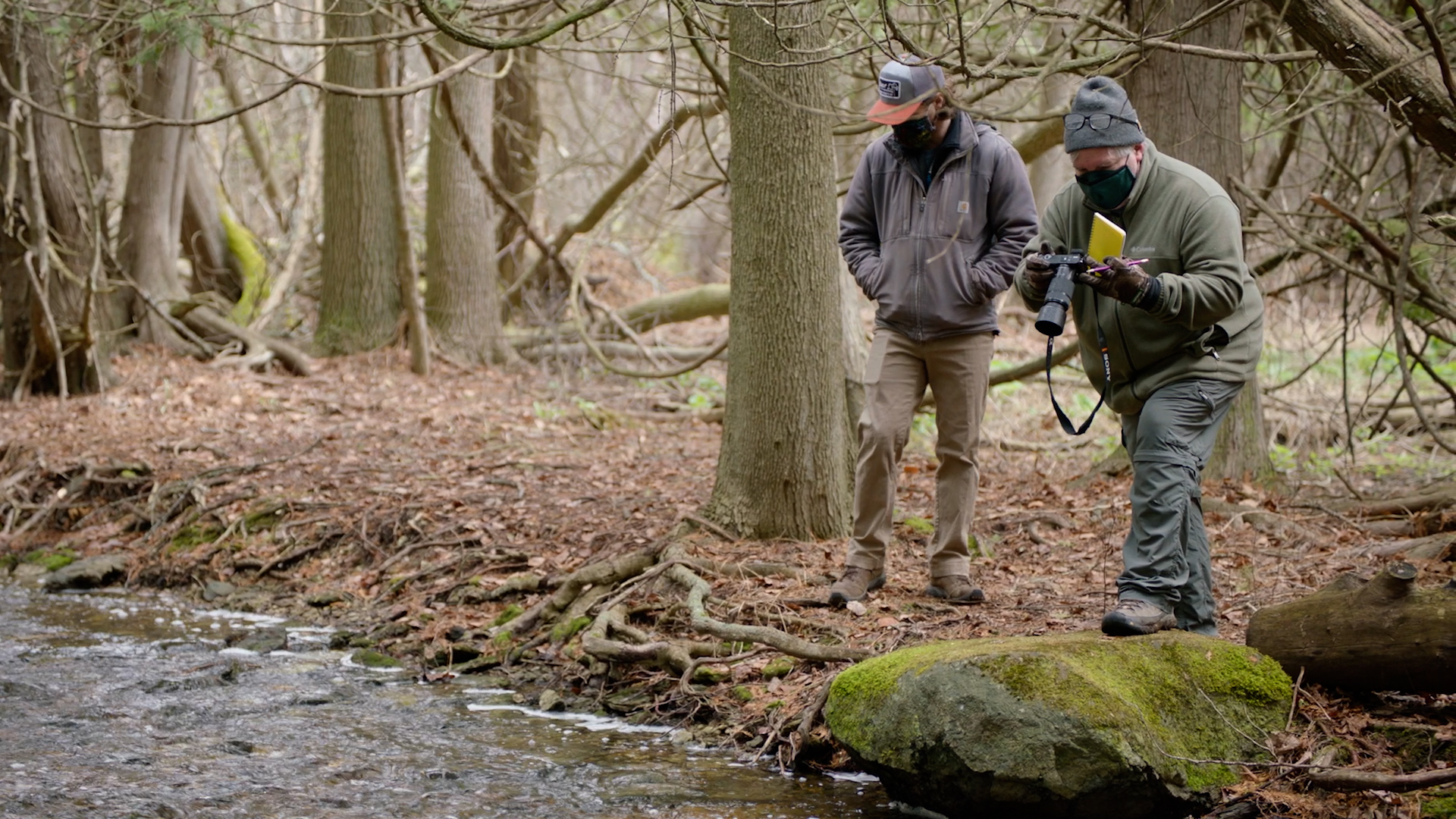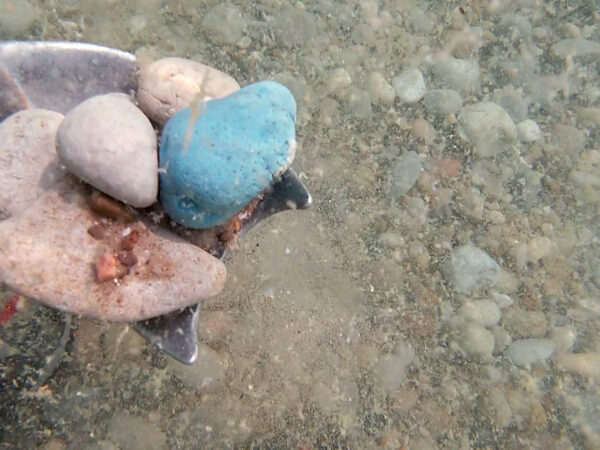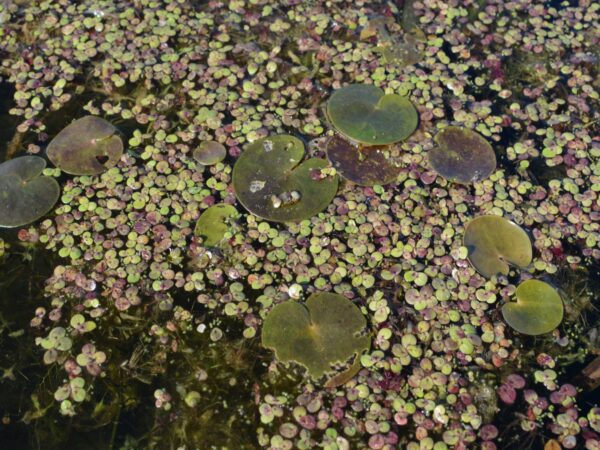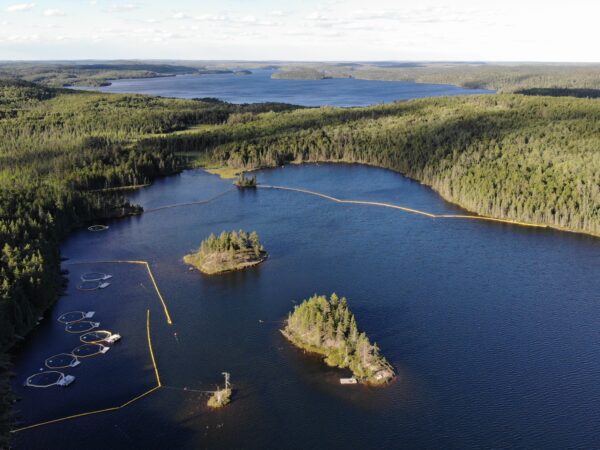
Editor’s Note: Great Lakes Now will update this list as we get suggestions or learn about more opportunities. Leave a comment or email the news director at nblakely@dptv.org if you know of a citizen science project that isn’t listed here.
For some, getting to contribute to scientific research might sound like a far-fetched possibility.
Jason Frenzel, stewardship coordinator at the Huron River Watershed Council, is one of the countless people working to change that assumption.
The HRWC is one of many organizations in the Great Lakes region that offer people, most with little prior scientific training, the opportunity to participate in science.
“Science isn’t this abstract concept that’s only done at a university,” Frenzel said.
Opportunities for non-scientists to get involved in scientific research are known as citizen science, and they typically involve collaboration between citizen scientists and professional researchers. Citizen scientists can gather data and make observations in the field, all while helping contribute to valuable scientific research that could not otherwise be completed without the help of people like them.
Becoming a citizen scientist is often as easy as taking a photo of wildlife, reading water levels or downloading an app. Other opportunities involve taking water samples and measuring light pollution. There’s even a program that encourages anglers to harvest fish stomachs and submit them for analysis. The possibilities are nearly limitless and vary widely, yet they all provide an opportunity for people to expand their horizons, get involved in the scientific process and learn something new.
“I think it’s really important for people to be able to experience the sciences,” Frenzel said. “We’re in a continually more fractured society, where we don’t see the whole, and being able to appreciate things that are different than your daily activities or interests makes for healthier humans.”
Great Lakes Now has compiled a list of some of the local, national and international citizen science opportunities. The COVID-19 pandemic has affected many projects, so interested citizen scientists are encouraged to check the project website to ensure the most up-to-date information.
Here’s a map with all the projects. Scroll down for the full list.
Illinois | Indiana | Michigan | Minnesota | New York | Ohio | Ontario | Pennsylvania | Wisconsin | U.S. | Canada | International
Illinois:
Join with the Bird Conservation Network to monitor birds at various sites in the Chicago area and improve bird habitat. A full list of current and future projects is available.
Community members are invited to use iNaturalist to inventory existing host plants, grow new host plants and observe bees to help conserve the endangered rusty patched bumble bee and other important pollinators.
Indiana:
Citizen scientists can participate in the Indiana Department of Environmental Management’s statewide water quality program. Simply sign up for a training to get started collecting water quality data that will help protect Indiana’s rivers.
Take and email a photo of the landscape at one of five designated locations inside Indiana Dunes National Park to contribute to a crowdsourced timelapse that will help scientists monitor the health of the terrain. The Park also offers a variety of other programs that involve everything from monitoring bird feeders to collecting sap from sugar maples.
Michigan:
Citizen science fishermen on lakes Huron and Michigan can remove the stomachs of the fish they catch, freeze them and drop them off at designated locations around the state. The stomachs and their contents will help researchers understand the diets of predatory fish.
A variety of programs are available for citizen scientists of all ages and abilities. Help researchers collect insects from local rivers, test your insect identification skills, measure water quality or simply take a hike in a designated area and record what you see.
The nonprofit, focused on the Rouge River, offers both one-day projects like fish monitoring and bug hunts or long-term projects like toad surveys.
Help track watershed health by collecting and identifying bugs.
Help monitor water temperature and quality in the watershed.
Volunteers that join the stream monitoring program meet at an assigned stream and collect macroinvertebrates that live in the water to help track waterway health.
Monitor Great Lakes birds, fish, streams and lakes to help track potential trends and problems.
Minnesota:
Find one of the many water monitoring sites across Minnesota, read the water depth and text the data to researchers who will use it to understand how streams are affected by weather and climate. Also available in Wisconsin.
Collect water samples to help researchers determine when and where algae grow in the St. Croix River. After the samples are collected, researchers analyze their toxicity to determine the water quality and the potential for blooms.
New York:
The Adirondack Council for Loon Conservation holds an annual loon census that helps protect loons and their habitats. Citizen scientists simply observe loons and report on their location and size.
Ohio:
Monitor water quality using innovative and easy to use technologies that will help raise awareness about water quality issues and protect Lake Erie.
Ontario:
Learn about the issues affecting the Rouge River Watershed and participate in efforts to monitor stream health through a variety of projects and opportunities.
Discover a variety of opportunities for becoming a citizen scientist in the Georgian Bay Biosphere and around Canada, from monitoring invasive species to reporting turtles on roads.
The Coastal Centre accepts volunteers to help with beach cleanups, monitoring, ecosystem restoration and assisting with special events, all relating to Lake Huron’s coastline.
Pennsylvania:
By becoming a member of the ASWP’s Citizen Science Corps, citizen scientists can find projects that interest them involving everything from birds to plant phrenology.
Citizen scientists can find many opportunities, from monitoring barn owls, kestrels and hawks, to surveying amphibians and reptiles.
Wisconsin:
Find one of the many sites across Wisconsin, read the water depth and text the data to researchers who will use it to understand how streams are affected by weather and climate. Also available in Minnesota.
National (U.S.):
Participate in a Great Lakes beach cleanup or sign up to host one, help keep the Great lakes clean and provide valuable data on the waste collected at various sites.
Become a citizen scientist in the national parks by collecting juvenile dragonflies that are later analyzed for mercury levels. Researchers use the data to determine water quality and monitor mercury reduction efforts.
Join the American Association of Zoos and Aquariums in their amphibian conservation efforts by monitoring the calls of local frogs and toads. Data collected by citizen scientists is used to discover patterns and develop conservation strategies.
The U.S. government provides a catalog that allows citizen scientists to search a database of available projects and find one that interests them.
National (Canada):
Commit to volunteer at one of the Swim Drink Fish community monitoring hubs to monitor water quality and collect samples. Results are used to raise awareness and are used in the popular Swim Guide app.
The Canadian government provides a database of citizen scientist projects where interested citizen scientists can find a project that matches their interests.
International:
The Global Bird Collision Mapper allows users to report bird collisions with buildings and view a map of the collisions around the world. The data is used to raise awareness for bird collision issues and helps researchers discover patterns and hotspots for bird collisions.
eBird is an app that allows citizen scientists and birders to take photos and create audio recordings that are shared with scientists, educators and other users. The data can be used to understand migration patterns, find birding spots and observe other trends.
Globe at Night encourages citizen scientists around the world to measure night sky brightness and submit their observations, raising awareness for the impact of light pollution and creating valuable data on the locations that light pollution affects.
Citizen scientist fishermen can take a photo of their catch and identify it or seek crowdsourced identification. Individual catches are added to an interactive map that allows researchers to find valuable data on species distribution, migration patterns and invasive species.
iNaturalist allows users to take a photo of a plant or animal, share it with other users and discuss and identify the organism with help from the iNaturalist community. Scientists use the data to understand where organisms are located.
After taking a short training and becoming a certified NestWatcher, citizen scientists are encouraged to find a bird nest, monitor it and submit data using the website or mobile app. The observations are used in a growing database to help researchers understand and monitor bird nesting habits.
After participating in a training session, citizen scientists can monitor monarch habitats and record data about the site, like milkweed and monarch density. Data is used by researchers to better understand the monarch butterfly and its migration patterns.
Citizen scientists can help entomologists at Cornell University with ladybug research simply by going outside, collecting ladybugs, taking pictures and submitting the photos to the submission form found on their website.
SciStarter provides a database of thousands of projects from around the world. Citizen scientists can search the database to find a project that best suits their interests.
Zooniverse is a platform that allows researchers to submit data for analysis by the millions of Zooniverse users. Interested citizen scientists simply find an interesting project, study the images, recordings or videos submitted by researchers and answer simple questions about the data to help researchers make discoveries that cannot be made through other types of analysis.
Catch more news on Great Lakes Now:
NOAA to designate Wisconsin coastline as national sanctuary
Chicago man jumps into Lake Michigan for 365th straight day
Great Lakes trails become friendlier for users with disabilities
Great Lakes Moment: Walleye frenzy on the Detroit River
API key not valid. Please pass a valid API key.Featured image: Volunteers document the sucker spawning run. (Great Lakes Now Episode 1026)
1 Comment
-
Thanks for this great resource! I’m organizing another community science project in Evanston, Illinois called Native Host Plants for the Rusty Patched Bumble Bee. Community scientists are growing host plants for the endangered Rusty Patched Bumble Bee, and uploading photos of existing and new host plants, and bees, to our iNaturalist project. Many of the host plants are also beneficial for other pollinators. Anyone is welcome to participate, even if they live outside of Evanston, because we need all the help we can get to protect and create habitat for this bee species, and other important pollinators. People can learn more about it and sign up at https://evanstonhostplants.org.




